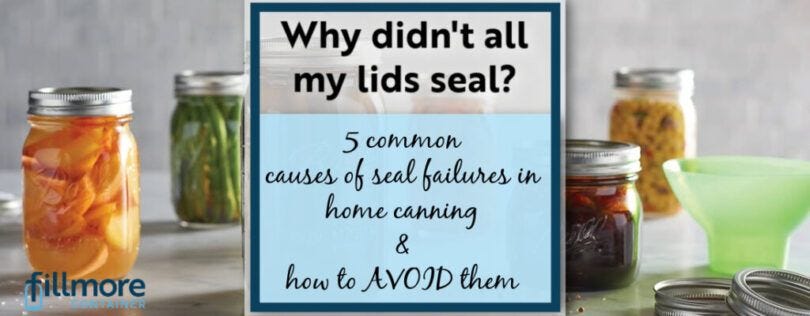
Why Didn’t My Canning Lids Seal?
*Updated March 2023*
Over the years, there have continued to be small changes made in the manufacturing of canning lids – even with what most of us know as Ball or Kerr lids. These changes, while they may be small or even unnoticeable to the naked eye, can make a difference in the nuances of canning – whether or not you pre-heat lids, or how much they get tightened. It’s important to be aware of possible changes whether you’re brand new to canning, someone who is getting back into canning after a break, or you are canning regularly. Regardless of your level of expertise, if you’re trying out a different brand of lid, or a different style of lid, it is recommended that you do some testing. It’s also worth noting that everyone will have lids that fail to seal at some point or another.
The deeper your understanding of the inner workings of the canning process, the more likely you will have success in your preserving. This post will help you better understand how a lid seals, and some reasons why they don’t seal.
*Since we are not a processing authority, we will not address the safety of your recipe here, but simply look at the physics of what happens and needs to happen during the canning process in order to create a viable seal.

The physics of a good canning lid seal
To get a good seal, there are some basic physics to discuss. After inspecting your jars for chips/cracks, properly filling your clean jars, allowing enough head-space, cleaning the rim of the jar, and properly capping the jar, the filled capped jars are placed into either a water bath canner or a pressure canner. Heat (and pressure if pressure canning) is applied to the proper level and for the proper amount of time. During this time, steam is forced out of the jars. This is crucial to create a vacuum, as a strong vacuum is essential to a good seal.
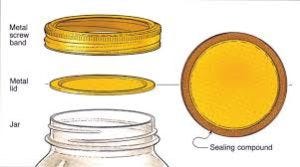 Another critical thing that is happening during this time is the softening of the plastisol on the lid. The plastisol softens enough for the rim of the jar to make a significant imprint on the plastisol, which helps to create that air-tight seal. At the end of the heat processing, jars are carefully lifted out and placed on an appropriate surface to sit, untouched, for 24 hours. As the jar & contents cool, the vacuum created pulls down on the lid – eventually causing it to appear concave. This is when you will sometimes hear that satisfying canning “pop”. Not all lids will produce that audible pop, but will still form a proper seal.
Another critical thing that is happening during this time is the softening of the plastisol on the lid. The plastisol softens enough for the rim of the jar to make a significant imprint on the plastisol, which helps to create that air-tight seal. At the end of the heat processing, jars are carefully lifted out and placed on an appropriate surface to sit, untouched, for 24 hours. As the jar & contents cool, the vacuum created pulls down on the lid – eventually causing it to appear concave. This is when you will sometimes hear that satisfying canning “pop”. Not all lids will produce that audible pop, but will still form a proper seal.
Why did my canning lids buckle?
When your lid buckles, it is frustrating, but there is a pretty clear-cut reason for this. Buckled lids are always a result of steam (or product, in the case of over-filling) attempting unsuccessfully to escape from the canning jar during the water bath or pressure canning process. This is most frequently caused by the lid being held too tightly to the rim of the jar by the ring/band. Over-softening the plastisol can also cause this to occur. When the plastisol is softer than needed, it will begin to form around the rim of the jar sooner than necessary, making it more difficult for the steam to escape.
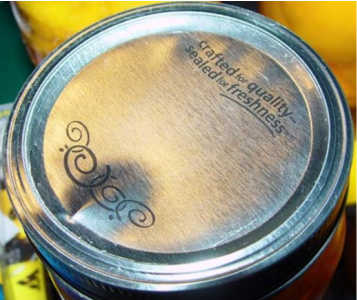
You can avoid buckled lids by following this advice. Be aware of when the plastisol on the lid is touching the rim of the jar. Do NOT overtighten your rings/lids. Lids/rings only need to be fingertip tight. If bands are too tight, air cannot vent during processing and lids will buckle; if bands are too loose, the vacuum will be low and seals may fail now or later. The plastisol needs to be in contact with the rim of the jar and the ring only needs to be finger-tip tight. This has become especially noticeable when using Superb Canning Lids. The plastisol on these lids seems to present in a greater amount, so if the lid is too tight, it becomes almost impossible for the steam to escape and will cause buckling.
What’s changed with canning lids?
After many years of research, it was determined that preheating Ball and Kerr canning lids are no longer necessary. The sealing compound used performs equally well at room temperature as it does pre-heated in simmering water. For many years canners were instructed to pre-heat lids before using. Now, you can save yourself a step! Don’t worry about pre-heating those lids, as it is no longer necessary.
As of 2022, there’s a new lid, Superb Canning Lids, made in the USA which has been performing well. These do not need to be preheated.
If you are using lids other than the 2-piece, follow the product recommendation.
5 Reasons Canning Lids Didn’t Seal and How to Avoid Seal Failures
There are a variety of reasons your lid doesn’t seal, pop, or a become concave. Let’s break them down.
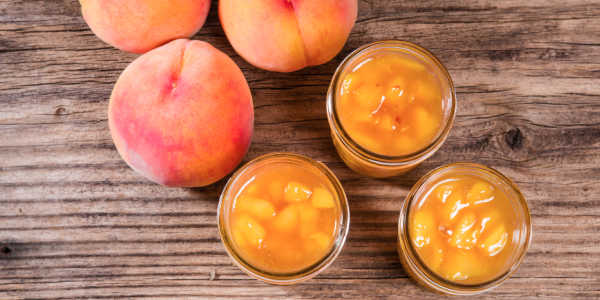
Cause #1
Foreign matter on the rim of the jar – which allows air to come back into the jar as it cools, thus losing the vacuum the process was designed to create. This is usually a result of improper cleaning after filling OR product from the jar escaping along with the steam during the heating process. This can also be a cause for lids that lose their seal after being put into the pantry.
How Do I Avoid it?
Ensure all rims and lids are clean. Allow the recommended headspace for your particular jar size and the contents of your recipe. Do a little research – some recipes tend to cook out or overflow more readily than others.
Cause #2
Specific attributes of your recipe…chunky fruits, vegetables that hold air, etc. can be troublesome.
How Do I Avoid it?
Do research and read through the complete recipe so that you’re preparing ingredients properly. If you have components that will trap air during the process, this air can create problems not only in the initial sealing but in the safety & stability of your product down the road.
Cause #3
The required temperature or pressure wasn’t maintained for the proper time.
How Do I Avoid it?
Carefully monitor your processing temperature and pressure. A boil-over may put out your gas. If the pressure is lost (gas goes out, etc) at any point during the process, it must be re-started at the beginning. Test your pressure gauge seasonally. Inspect your gasket if your pressure canner requires one.
Cause #4
A chip on the rim or a crack in the canning jar will not allow for a strong seal and a cracked jar can lead to spoiled foods.
How Do I Avoid it?
Always inspect your jars before filling them. Recycle or re-purpose damaged canning jars.
Cause #5
Using lids that were already used, or using overly aged old lids.
How Do I Avoid it?
Store your used lids separately so that you don’t accidentally try to use them again. If you stock up on lids, try to apply the FIFO (first in, first out) practice. Store your lids in a smart place – not excessively cold nor hot.
What to do if a jar does not seal
If your lid does not seal, place the unsealed jar in the refrigerator and use within 3 days or remove the food from the jars and place in a freezer-safe jar or container and freeze.
According to the National Center for Food Preservation, safely processed home canned food can be re-canned if the unsealed jar is discovered within 24 hours.
To re-can, remove the lid and check the jar sealing surface for tiny nicks. Change the jar, if necessary. With two-piece metal lids, use a new prepared flat lid. Reprocess the jar using the same processing time.
How do I know if my jar sealed properly?
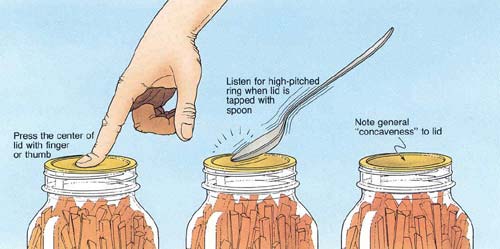
If you are an experienced canner, most likely you’ll know if your jars are sealed. But, if you are new to canning here are some helpful hints to determine if your lids/jars sealed correctly. Once removed from the canner/pressure cooker wait 24 hours or overnight for the jars to cool. Remove the rings from your jars. If the lid looks concave, it is sealed. If you can pick up the jar by the lid and the lid doesn’t move or come off, it is sealed. You can find additional tips on testing seals here.
Need more information?
Your local Extension office or the National Center for Home Food Preservation are great resources to help you troubleshoot other questions about lids sealing, and much more.
*Since we are not a processing authority, we are not able to address the safety of your recipe, but simply look at the physics of what happens and needs to happen during the canning process to create a viable seal.
Follow Us On Pinterest
Find more canning and preserving tips on our Pinterest boards.
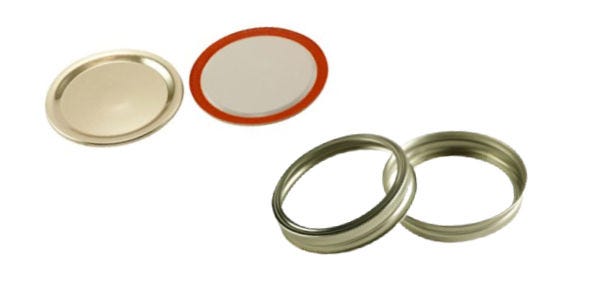
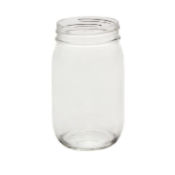
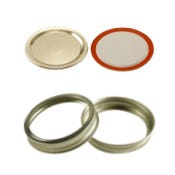




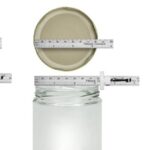

Great article! Thanks 🙂
During the canning lid shortage I ordered some from China, they come in a unmarked sleeve. We used them and in two weeks we opened one of our green beans, it had sealed but had a black lookin mold inside on the inside sealed lid. We then were able to order the ball lids. Needles to say we reprocesses 100 jars with ball lids.
Respectively Phillip
Hi Phillip, Sadly, we’ve heard too many similar stories. We’re glad that you were able to find the appropriate lids!
I know we no longer have to pre heat the Kerr and Ball lids but do we need to pre-heat the Superb lids?
If you are processing in a water bath or pressure canner, you do not need to pre-heat them.
Please explain why it’s necessary to remove the rings before storing jars. I am a long time canner- jam & pickles mostly- and I never have removed the rings. Is it a food safety issue?
Hi Nina, Yes, it is a safety concern…but to preface…having them on will not make anything “go bad” more quickly. The reason behind removing the rings/bands (after they’ve cooled completely) is so that the presence of the ring/band doesn’t mask or hide a failed seal. If processed properly, the vacuum created should be the only force maintaining the seal of the jar. If ring is still holding the lid in place, you won’t know as quickly if the seal has failed. It’s a similar concern with stacking jars. It’s also better for your rings. They are more likely to get rusty more quickly or to get stuck onto your jar if juices/liquid escaped the jar in the process. I hope this helps!